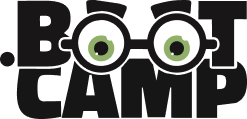With the continual evolution of technology, the educational landscape is experiencing unprecedented changes. In recent years, hybrid-learning has emerged as a powerful tool, combining both traditional face-to-face instruction and online learning. This method not only fosters a more personalized learning experience but also makes education accessible to a larger demographic.
Recognizing the Need for a Change
When considering adopting a hybrid-learning model, it’s crucial to evaluate the existing educational framework and identify the need for change. Schools and institutions must first assess whether their current educational model meets the diverse needs of their students. Furthermore, they should examine whether or not the existing curriculum encourages engagement and facilitates effective learning.
Assessing Technological Readiness
Before embarking on the transition to hybrid-learning, educational institutions should thoroughly assess their technological infrastructure. They need to ensure that they have the necessary resources and platforms to support online learning. Additionally, they must also gauge the technological proficiency of both students and educators, providing training and support as needed.
Identifying Educational Goals
To make the switch to hybrid learning truly effective, schools must clearly outline their educational objectives. They need to identify the learning outcomes they aim to achieve and decide how a hybrid model can best serve those goals. Moreover, a detailed plan, outlining the implementation and assessment strategies, is essential for maintaining focus and ensuring success.
Evaluating Student and Faculty Needs
Considering the unique needs and preferences of both students and faculty is critical when transitioning to hybrid learning. Conversations and surveys can help in understanding the individual requirements and preferences of the learners and educators. Thus, enabling institutions to create a more inclusive and flexible learning environment.
Deciding the Right Time
Choosing the optimal time to switch to hybrid learning is a nuanced decision. It requires careful consideration of several factors, including technological readiness, educational goals, and the needs of students and faculty. Once all these aspects are addressed adequately, schools can confidently move towards implementing a hybrid learning model.
Implementing the Shift: Practical Steps
Transitioning to a hybrid learning model necessitates meticulous planning and execution. Therefore, educational institutions must focus on developing a comprehensive implementation strategy that addresses all critical aspects of the hybrid learning environment.
Curriculum Development and Adaptation
It’s essential to review and modify the existing curriculum to suit the needs of a hybrid learning environment. Additionally, institutions must invest time and resources in developing engaging and effective learning materials. This way, they can ensure the curriculum is coherent, cohesive, and conducive to hybrid learning.
Professional Development for Educators
To foster a smooth transition, institutions must invest in professional development programs for educators. These programs should aim to enhance teachers’ digital literacy, pedagogical skills, and ability to adapt to new teaching methodologies. Consequently, the teaching staff will be better equipped to address the diverse needs of their students in a hybrid learning environment.
Creating an Inclusive Learning Environment
Ensuring that all students have equal access to learning opportunities is paramount. Educational institutions need to implement strategies to accommodate the varied needs of their students. Moreover, they must promote an inclusive learning culture that values diversity and fosters a sense of belonging among all learners.
Monitoring and Assessment
Continuous monitoring and assessment are crucial for the successful implementation of a hybrid learning model. These processes enable institutions to identify areas for improvement and make necessary adjustments promptly. Furthermore, constructive feedback from students and educators can guide refinements and enhancements to the hybrid learning experience.
Embracing the Future of Education
Hybrid-learning, with its amalgamation of traditional and online learning methodologies, stands as a beacon for the future of education. By adopting this innovative learning model, schools can provide a more inclusive, flexible, and personalized learning experience. Furthermore, the adaptability of hybrid learning models can help in catering to the evolving needs of the education sector.
With careful consideration and deliberate execution, educational institutions can smoothly transition to hybrid learning, harnessing its potential to create a more equitable and enriching learning environment.
